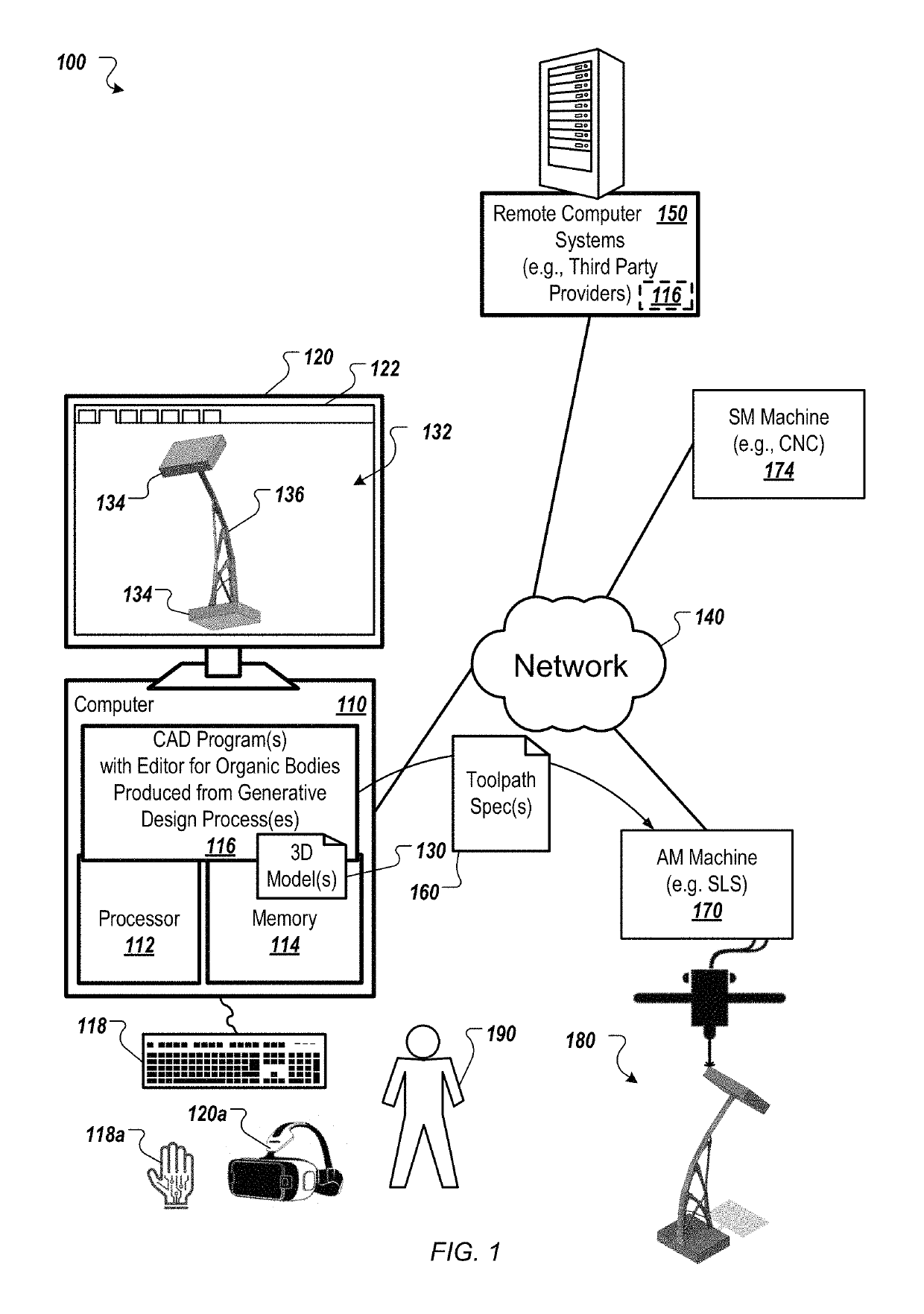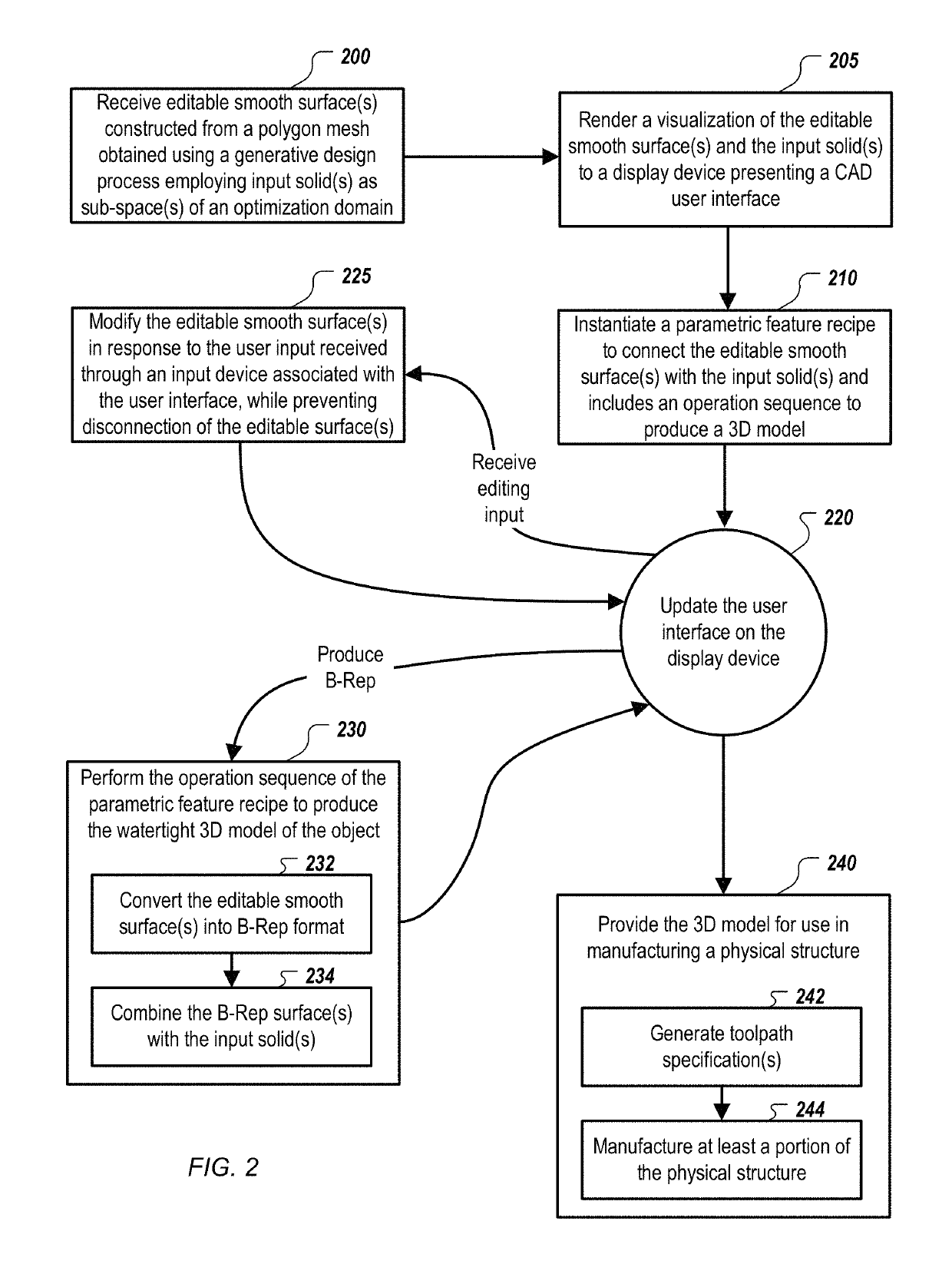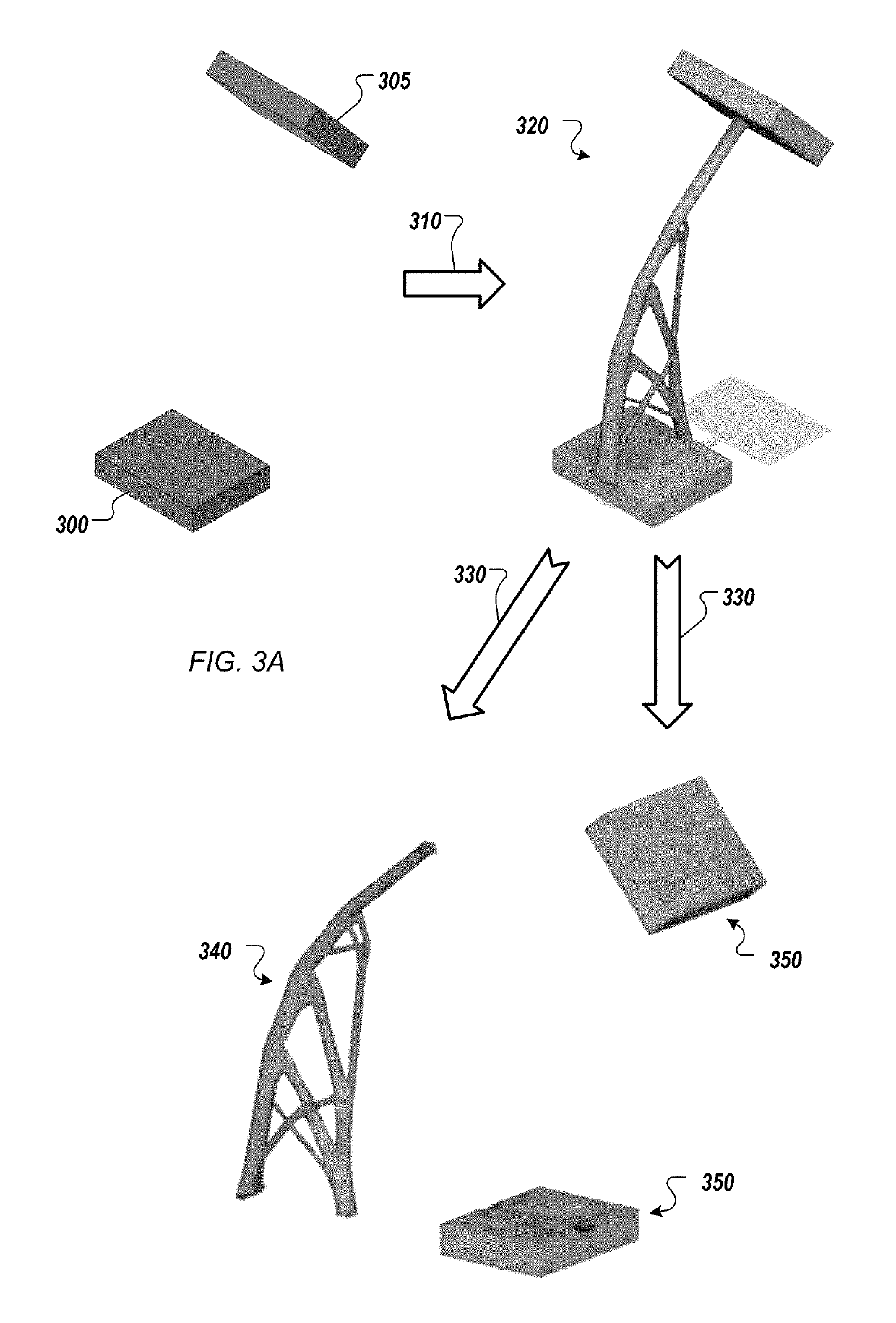Facilitated editing of generative design geometry in computer aided design user interface
a technology user interface, applied in the field of computer aided design of physical structures, can solve the problem that the generative design solver does not operate directly, and achieve the effect of facilitating editing of those surfaces, reducing time, and facilitating further processing
- Summary
- Abstract
- Description
- Claims
- Application Information
AI Technical Summary
Benefits of technology
Problems solved by technology
Method used
Image
Examples
Embodiment Construction
[0029]FIG. 1 shows an example of a system 100 usable to modify generative design geometry in computer aided design of physical structures, which can then be manufactured using additive manufacturing, subtractive manufacturing and / or other manufacturing systems and techniques. A computer 110 includes a processor 112 and a memory 114, and the computer 110 can be connected to a network 140, which can be a private network, a public network, a virtual private network, etc. The processor 112 can be one or more hardware processors, which can each include multiple processor cores. The memory 114 can include both volatile and non-volatile memory, such as Random Access Memory (RAM) and Flash RAM. The computer 110 can include various types of computer storage media and devices, which can include the memory 114, to store instructions of programs that run on the processor 112, including Computer Aided Design (CAD) program(s) 116, which implement three-dimensional (3D) modeling functions and incl...
PUM
| Property | Measurement | Unit |
|---|---|---|
| physical structure | aaaaa | aaaaa |
| physical structures | aaaaa | aaaaa |
| weight | aaaaa | aaaaa |
Abstract
Description
Claims
Application Information
 Login to View More
Login to View More - R&D
- Intellectual Property
- Life Sciences
- Materials
- Tech Scout
- Unparalleled Data Quality
- Higher Quality Content
- 60% Fewer Hallucinations
Browse by: Latest US Patents, China's latest patents, Technical Efficacy Thesaurus, Application Domain, Technology Topic, Popular Technical Reports.
© 2025 PatSnap. All rights reserved.Legal|Privacy policy|Modern Slavery Act Transparency Statement|Sitemap|About US| Contact US: help@patsnap.com



